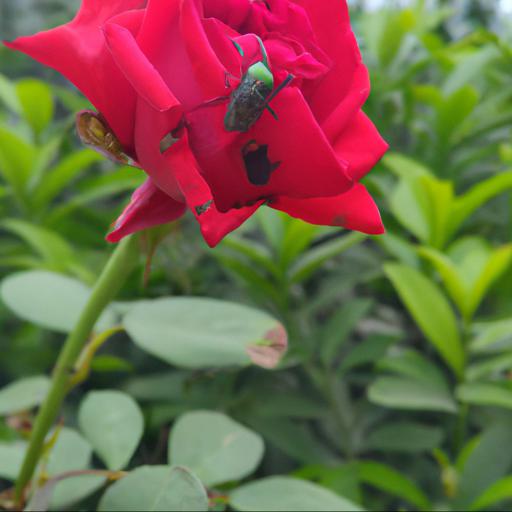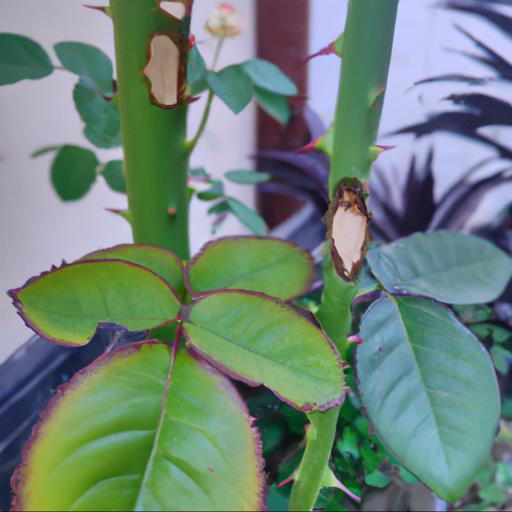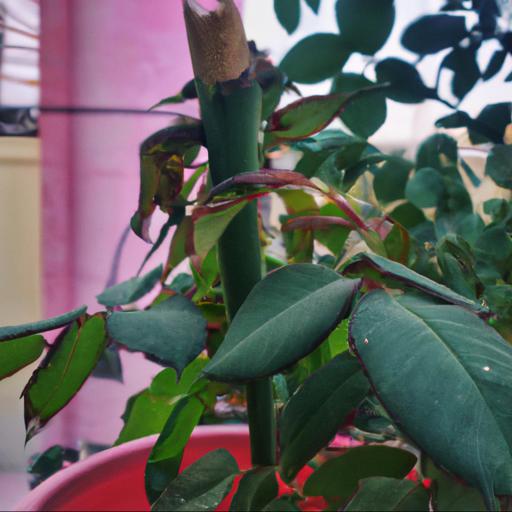Rose problems can be difficult to deal with, but with the right strategies and solutions, they can be solved. Whether it’s pests, diseases, or other issues, there are ways to get your rose garden looking its best.
In this blog, we’ll explore some of the most common rose problems and discuss how to address them. From organic solutions to chemical treatments, we’ll provide you with the information you need to keep your roses healthy and happy. So, if you’re looking for ways to solve your rose problems, this blog is the perfect place to start.
Common rose problems and how to solve them

We all love roses for their beauty, charm and exquisite fragrance, making them a favorite for gardeners everywhere. Unfortunately, there are many common problems our roses can encounter that can cause great disappointment. From disease and pests, to environmental conditions, here is a guide to some of the common rose problems, and how to solve them.
Fungal diseases are among the most common rose problems, and can manifest in various forms. Powdery mildew, immediately recognizable by its grayish-white powdery coating on the leaves and stems of your roses, is the most commonly seen fungal disease.
To get rid of it, first remove any infected parts of the plant, then spray with a fungicidal spray. You’ll want to repeat this process on a two week basis as long as the infection persists. Another common problem with roses is pests, such as aphids, spider mites and scale.
Aphids tend to congregate at the tender new growth and can be removed with a strong blast of water. For smaller infestations, insecticidal soap or horticultural oil can provide some relief.
If you can catch the infestation early, you may be able to prevent it from spreading. Spider mites and scale, on the other hand, tend to be more difficult to get rid of, and an insecticide spray may be required. Finally, environmental conditions can be an issue for our roses.
Roses need plenty of sunny days, but too much sun can cause sunscald, which will eventually lead to dieback. To protect your roses from this, try constructing a shade structure and moving them away from the sunniest spots in the garden.
Similarly, roses need adequate water, especially during drought conditions, and keeping the soil consistently moist will help to keep them looking their best. There are plenty of solutions to common rose problems, so don’t despair if your collection isn’t looking as vibrant as you would like. With the right precautions and treatments, you could have the roses of your dreams, enriching your garden with their beauty and aroma.
Tips for preventing rose problems

As an expert gardener, I know how frustrating it can be to watch your beloved roses suffer from endless problems. From pest infestations to fungal growths, it can seem like the odds are always stacked against the most beautiful of all blooms. However, there are steps you can take to prevent rose problems before they become an issue.
Here are some tips for staying ahead of the game and keeping your roses healthy and strong. First and foremost, be sure to choose varieties that are suited to your local climate.
Different types of roses have different needs when it comes to temperature, water, and soil. Using soil rich in nutrient, mulching the plant, and proper watering will also help to ensure optimal growth and prevent diseases.
Additionally, make sure to avoid overcrowding your roses and provide sufficient air circulation. Furthermore, timely pruning is absolutely essential. Trimming away dead, diseased, or crossing branches promotes healthier growth, and regular fertilization will keep your roses strong and increase their chance of survival.
Be sure to pick a product that is suitable for roses, and avoid over-fertilizing. Overuse of fertilizer can lead to a buildup of salt and other chemicals, ultimately killing your plant. Finally, make sure to keep an eye out for pests and diseases.
Aphids, spider mites, and beetle larvae are common culprits, and a variety of fungal issues can afflict roses. Regular inspections will help to identify any issues before they spread, and often the problem can be solved with a bit of good old-fashioned manual labour and some organic pesticide.
With these tips in mind, you’ll be well on your way to avoiding rose problems and having a beautiful garden for years to come.
Natural solutions for rose problems

“Rose Problems Solved: Natural Solutions from a UK Garden Expert”As a UK garden expert, I know that weeds and insects are a common challenge for assiduous rose gardeners. But never fear, there are simple and natural solutions that can help you get the most from your beautiful rose garden without using any harsh chemicals. Firstly, for dealing with weeds, simply pull large weeds out by hand and for smaller seedlings and annuals, you can apply organic mulch.
This will smother the weeds and also provide much-needed nutrition for your roses. Don’t try to clear away all the weeds at once – focus on the areas that are heavy with growth and you’ll be able to keep the weeds at bay in the long run.
Insects can be another major problem in rose gardens and although pesticides can give quick relief, an organic solution is a much better choice for the health of your garden and the environment. For aphids, spray a soapy solution onto the infected leaves and stems to instantly reduce the population.
To tackle powdery mildew, mix together a solution of one tablespoon of baking powder, two and a half teaspoons of canola oil and two tablespoons of liquid soap. You should then spray this mixture onto both the affected and the surrounding, unaffected areas of the garden. This will kill both the spores of the mildew and the adults, reducing the population in and around your rose garden.
If you stick with these all-natural solutions, your rose garden with flourish and you’ll be proud of your handy work in no time.
Conclusion
This article has provided solutions to common rose problems. It has discussed the causes of common rose diseases, pests, and environmental issues, and provided advice on how to prevent and treat them.
With this knowledge, gardeners can successfully grow beautiful, healthy roses.
FAQ
What are the most common rose problems?
The most common rose problems include black spot, powdery mildew, rust, aphids, Japanese beetles, and rose stem borers.
How can I prevent rose problems?
To prevent rose problems, it is important to provide the roses with adequate sunlight, water, and nutrients. Additionally, it is important to prune the roses regularly, remove any diseased or dead leaves and stems, and inspect the plants for pests. Finally, it is important to use appropriate fungicides and insecticides to control any potential problems.
What are the signs of rose disease?
The signs of rose disease can include discolored leaves, wilting, yellowing, spots, and/or lesions on the leaves, as well as stunted or distorted growth. Other signs may include powdery mildew, black spot, rust, cankers, and aphid infestations.
How can I treat rose problems?
To treat rose problems, you should first identify the type of problem you are dealing with, such as pests, diseases, or environmental issues. Once you have identified the problem, you can then take steps to address it, such as pruning, applying fungicides, or providing adequate water and sunlight.
What are the best methods for controlling rose pests?
The best methods for controlling rose pests include using insecticidal soaps, horticultural oils, neem oil, and beneficial insects such as ladybugs and lacewings. Additionally, it is important to practice good cultural practices such as removing dead leaves and debris, and pruning away diseased or damaged stems.
How can I identify rose problems early?
To identify rose problems early, look for signs of disease, such as discolored leaves, wilting, or spots on the leaves and stems. Inspect the plant for pests, such as aphids, spider mites, and Japanese beetles. Check the soil for signs of nutrient deficiencies, such as yellowing leaves or stunted growth. Finally, look for signs of environmental stress, such as sunburn or drought stress.

